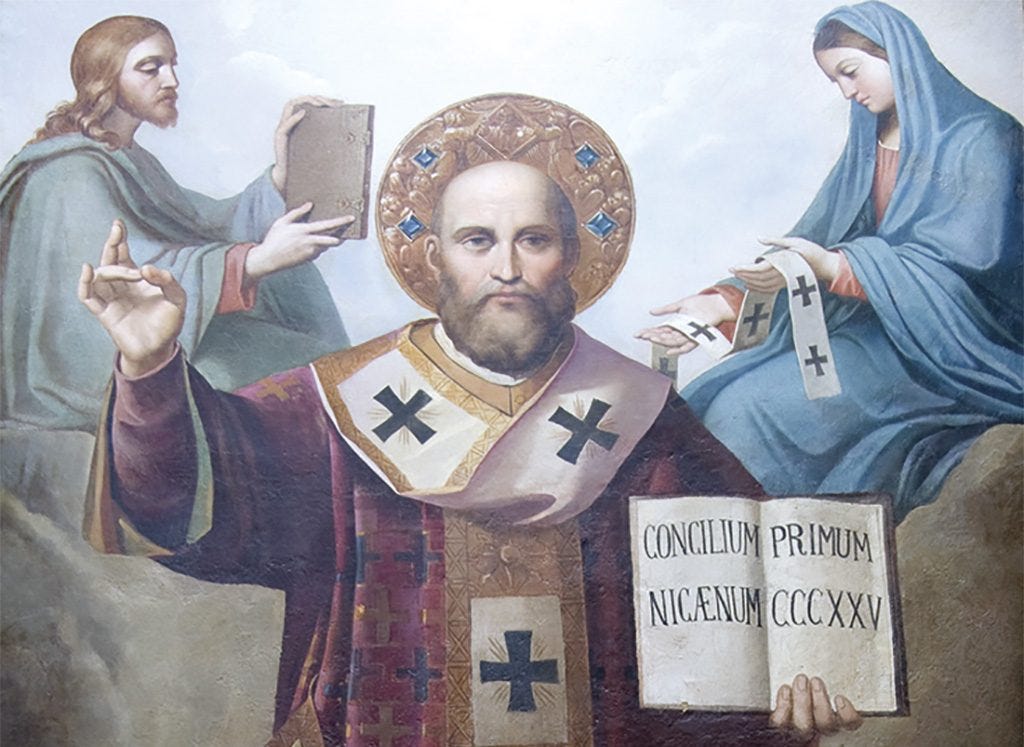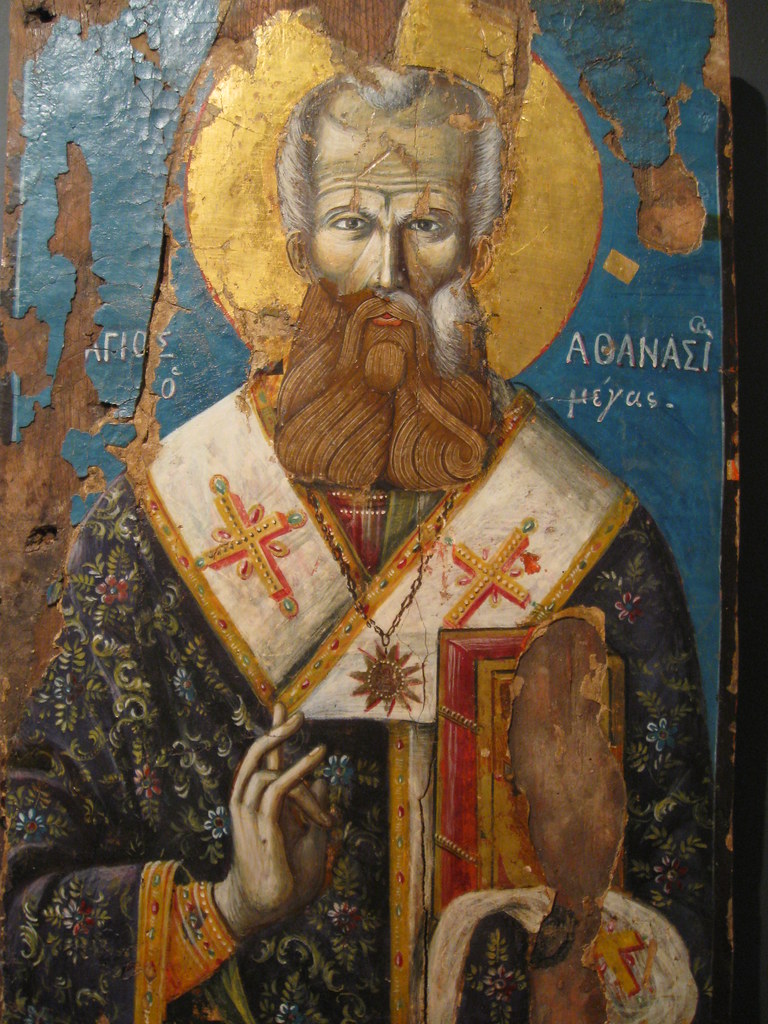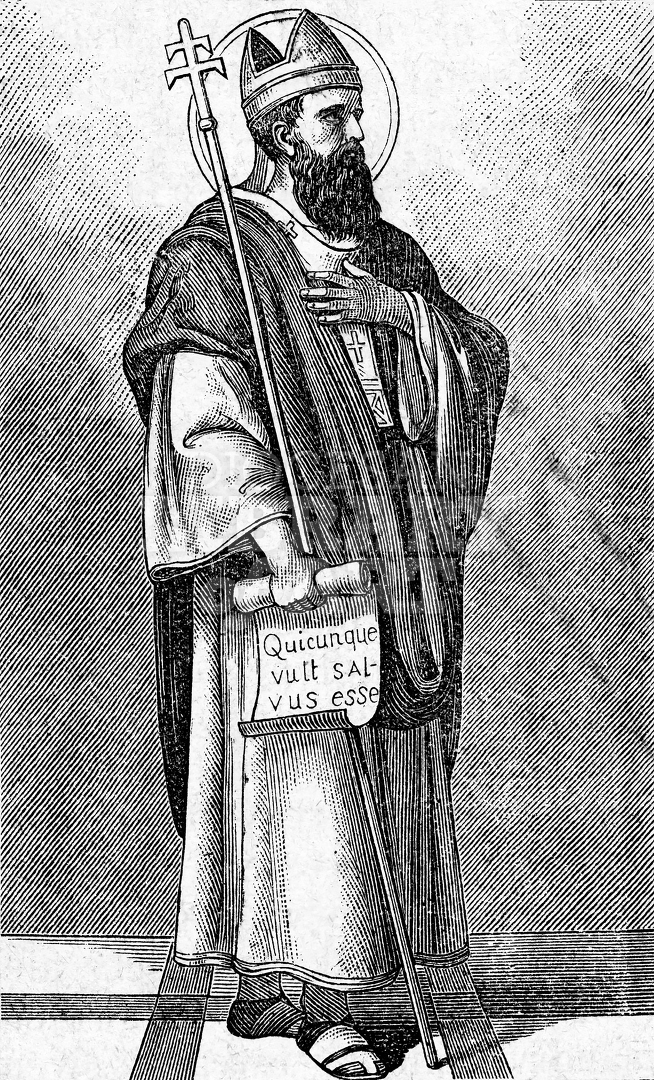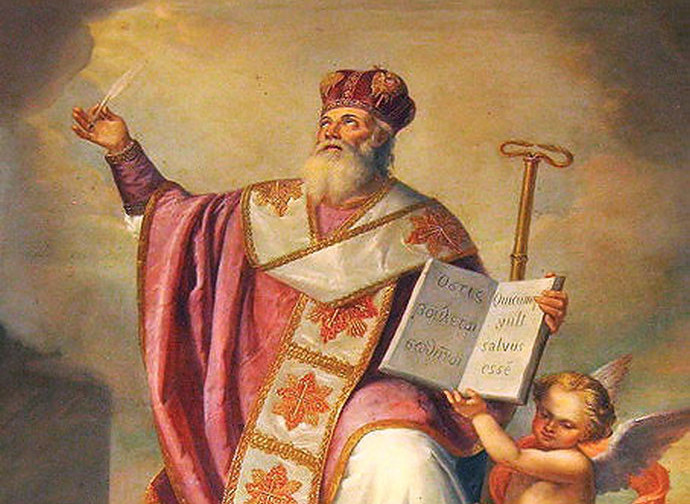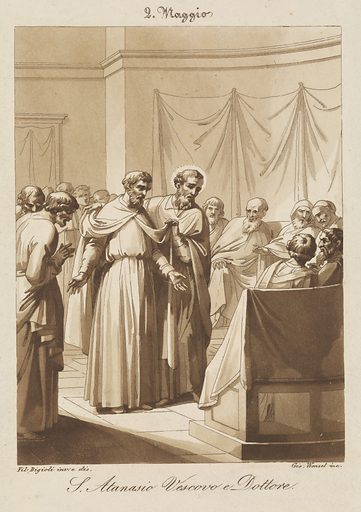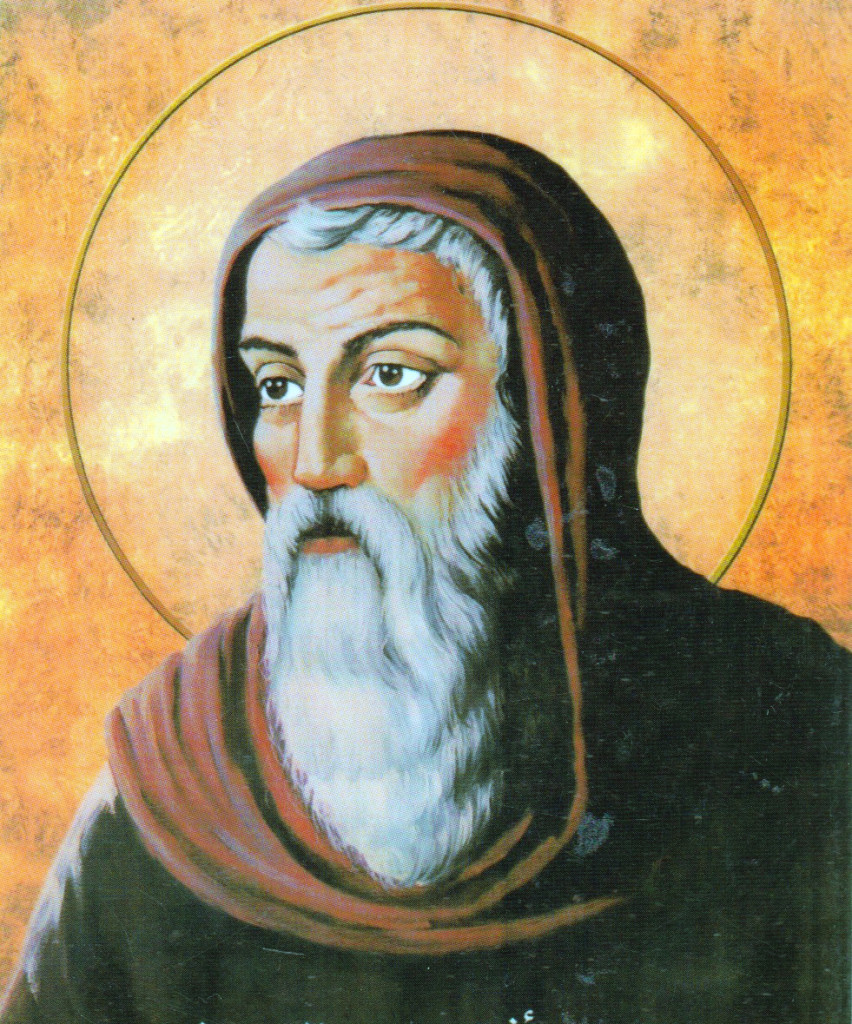“Pillar of the Church” and “Champion of Christ’s Divinity” against the heresy of Arianism.
Athanasius was born to a Catholic family in Alexandria, between 294 and 296. His parents were wealthy enough to provide him with a good education, but he was not a member of the Egyptian aristocracy.
Alexandria was the most important trade center in the Roman Empire in his youth and was ethnically diverse.
He was well educated, fluent in both Greek and Coptic, and had already, while still a young man, a reputation of wisdom, keen insight, and quickness of perception. Because of this, following the Great Persecution of the Catholic Church, Bishop Alexander invited Athanasius to be his understudy and secretary.
He was ordained a deacon and attended the First Council of Nicaea, as he was an obvious choice to replace his aging mentor.
He became acquainted with some of the solitary monks of the Egyptian desert, including Anthony the Great who he wrote about.
Those who followed the heresy of Arianism, as originated by Arius, denied the divinity of Christ. Arius came into direct conflict with Bishop Alexander and was subsequently excommunicated by Alexander. Arius began to elicit the support of many bishops who agreed with his position. It became especially strong in the Eastern Church and began to spread rapidly throughout.
The bishop was dying, and he called for Athanasius, but he instead ran away out of fear of being made the new bishop. The Catholic population surrounded the church, held up their hands and cried, “Give us Athanasius!” The bishops assembled and elected him in the year 326 at about 30 years of age.
When Arius had been allowed to return from exile in 328, Athanasius refused to remove the sentence of excommunication. He was constantly engaged, disputing the Arians, and suffering in defense of the Nicene faith. He spent the next 17 years of this battle having been exiled 5 times as ordered by 4 different Roman Emperors. Several more times he fled the city to escape those who sought to take his life.
His final years were spent repairing the damage done by years of violence, dissent, and exile. He resumed his writing and preaching undisturbed and re-emphasized the view of the Incarnation. He was not speculative but held on to the tradition, teaching, and faith proclaimed by the apostles and guarded by the fathers. He held that both the Son of God and the Holy Spirit are consubstantial with the Father, which had a great deal of influence in the development of later doctrines regarding the Trinity.
On May 2, 373, having consecrated Peter II, one of his presbyters as his successor, he died peacefully in his own bed, surrounded by this clergy and faithful supporters.
He has been declared as a Doctor of the Church.
He was buried in Alexandria, but his remains were later transferred to the Chiesa di San Zaccaria in Venice, Italy.
He is the patron saint of Theologians.
His feast day is May 2.
For God’s Glory.
